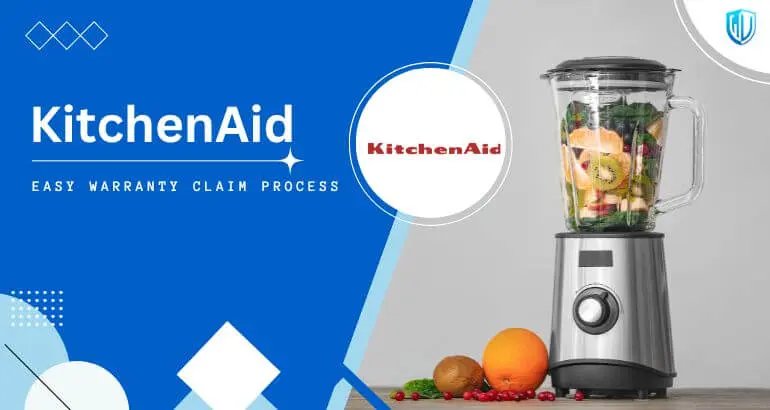
But how do you actually claim a warranty for your KitchenAid appliance? It’s not exactly as simple as waving a magic wand (though that would be nice). If you’ve never done it before, it can feel a bit like trying to find a hidden recipe in a messy kitchen drawer—confusing, maybe a little intimidating. Don’t worry. Once you know the steps, it’s really more like following a basic recipe: gather your ingredients (documents), follow a few instructions, and let the professionals handle the fix.
What Does KitchenAid’s Appliance Warranty Cover?
Before you grab the phone or hop online, it helps to know what the warranty actually covers. Not every quirk or glitch qualifies. Generally, the standard KitchenAid warranty covers parts and labor for defects in materials or workmanship—stuff that shouldn’t go wrong under normal use. It’s a bit like a “quality promise.” If your appliance stops working because of a fault in the way it was made, or if a part fails before its time, KitchenAid’s warranty is there to back you up.
But there are exceptions. Most KitchenAid warranties won’t cover damage that comes from accidents, misuse (like trying to blend rocks—don’t laugh, it happens), or normal wear and tear, such as faded paint or scratched surfaces. Also, alterations or repairs made by unauthorized technicians can void your warranty faster than you can say “DIY disaster.” In short, if your remote for the fridge stops syncing or the code for your smart oven needs a software reset, check whether it’s a manufacturing problem or something else.
The length of the coverage will vary by product. For example, small appliances like mixers might have a one-year warranty, while bigger appliances—think dishwashers and refrigerators—could offer longer protection. Always check your user manual or the official KitchenAid website for the specifics. That little warranty booklet may look boring now, but you’ll love it when you need it.
Preparing To Claim: What You Need First
Let me explain: filing a warranty claim isn’t just about telling KitchenAid, “Hey, my blender’s broken.” You’ll need to play detective and gather a few essential things. Imagine you’re putting together a recipe, but instead of flour and eggs, you need documents and details at the ready.
- Proof of purchase: This is usually your receipt or order confirmation. KitchenAid almost always wants to see when and where you bought the appliance.
- Model and serial number: These are like the appliance’s fingerprints. You’ll typically find them on a silver sticker somewhere on the unit—sometimes tucked away where you need a flashlight to read it. (On a stand mixer, it’s under the base. On a refrigerator, check inside the door frame.)
- Description of the problem: The more details, the better. Is the remote for your oven not syncing? Is the mixer making a weird noise? Be ready to explain what’s wrong, when it started, and what you’ve tried.
- Photos or videos: Sometimes, visuals help. If your appliance is visibly damaged or glitching, snap a picture or take a short video—especially if you’re sharing your claim online.
Keep these items handy. Trust me, you’ll save yourself a lot of back-and-forth frustration. If you’re missing your receipt, don’t panic yet—sometimes KitchenAid can look up purchases made online or through registered accounts, but it’ll slow the process.
How To Start Your Warranty Claim With KitchenAid
Let’s get down to business. You can usually start your KitchenAid warranty claim in a few different ways. Their customer service has gotten much better in recent years, and they’re pretty friendly—just as you’d hope when your morning is derailed by a silent coffee maker. Here’s how you can begin:
- Online: Head over to the official KitchenAid warranty page. There’s usually a user-friendly form that walks you through the process. Fill it out with your details, describe the issue, and attach any photos if prompted.
- By phone: The old-school route works too. Call KitchenAid customer service (the number is usually on your user manual or found easily online). Here, you’ll talk to a rep who will ask for your information and—be warned—might make you repeat yourself a bit.
- Through the retailer: If you bought your appliance at a store, sometimes the retailer helps with the claim—especially if it’s a big chain. They can help connect you with KitchenAid or handle paperwork on your behalf.
Whichever route you pick, make sure you have all your details ready. The goal is to make the process smooth and avoid unnecessary delays. If you’re working with a smart appliance (maybe you need to reset, troubleshoot, or pair a remote function), describe the technical glitch clearly. Honestly, the more specific you are, the faster they can help.
What Happens After You Submit Your Claim?
You might be wondering, “What actually happens next?” It’s a bit like waiting for a cake to bake—you’ve done your part, and now it’s time for KitchenAid to take over.
Usually, you’ll receive a confirmation—either by email or phone—letting you know your claim is being reviewed. KitchenAid’s team will look over the information you provided, check the warranty status, and decide what to do next. This part can take a couple of days, so don’t panic if you don’t hear back immediately.
If your claim is approved, they’ll guide you through the next steps. This could involve sending a technician to your home (for bigger appliances), mailing you a replacement part, or even swapping out the whole unit if it’s a smaller item. Sometimes, you’ll need to send the malfunctioning appliance back, so hang on to your original packaging if you still have it.
Now, if your warranty claim is denied—maybe because the issue isn’t covered or the warranty has expired—they’ll explain why. Don’t be afraid to ask questions. Sometimes you can troubleshoot or fix the issue yourself, or they may offer discounted repairs. But if it’s a clear defect and falls within your coverage, KitchenAid is generally pretty fair.
Common Issues Covered (And Not Covered) By KitchenAid Warranty
Here’s where things get interesting. Not every hiccup in your KitchenAid appliance’s life will qualify for a warranty claim. Let’s break down what’s typically covered, and what’s likely to get a polite “sorry, not covered” response.
- Covered issues: Defective motors, broken internal parts, electrical components that fail under normal use, faulty remotes that won’t sync or pair (as long as you followed the code and setup instructions).
- Not covered: Cosmetic scratches, dings from dropping, battery replacements, problems from power surges, damage after unauthorized repairs, or using your appliance for something wild (like commercial use when it’s meant for home kitchens).
Let me tell you—people are sometimes surprised when their claim is denied because they tried to fix the issue themselves. Maybe you watched a YouTube video and decided to reset a code or open up the appliance. That’s risky. Once you pop the hood on your own, the warranty might be void.
If you’re ever unsure, call KitchenAid customer service before tinkering. They’re used to troubleshooting everything from blenders that won’t spin to remotes that won’t connect, and they’ll tell you if your next move could risk your coverage.
Tips To Speed Up Your Warranty Claim
Here’s a little secret: most warranty claims are delayed because of missing information or unclear descriptions. If you want your claim to go through quickly—so you can get back to whipping cream or cooling leftovers—try these tips:
- Register your appliance as soon as you buy it. It isn’t required, but it can help KitchenAid look up your purchase faster.
- Keep your receipts and model information together in a folder or digital file. That way, you’re not scrambling when something breaks.
- Be clear and detailed when describing your issue, especially for things like digital controls or remotes that need a reset or troubleshooting step.
- Follow up politely if you haven’t heard back in a week. Sometimes, claims fall through the cracks (they’re only human, after all).
If you work through a retailer, confirm whether they’ll handle the paperwork or if you need to submit documents directly to KitchenAid. Each store is a little different.
Alternatives If Your Warranty Won’t Cover The Repair
So, what if your claim gets denied, or your warranty is long expired? Don’t toss your appliance just yet. You might have some options.
- Authorized repair centers: KitchenAid has a network of certified service providers. Even outside warranty, these folks know the brand inside and out and can handle everything from a code reset on your remote to deep mechanical repairs.
- Appliance insurance or credit card benefits: Some credit cards offer buyer protection for new appliances. Check your card’s policy—you might be in luck.
- DIY troubleshooting: For minor issues, like a dead battery in your remote or needing to pair a control panel, KitchenAid’s website has official guides and videos. If you’re comfortable, you can sometimes fix the simple stuff yourself without risking further damage.
- Universal replacements: For non-essential parts, like remotes or trays, you can sometimes use a universal alternative. Just be sure it’s compatible—KitchenAid’s own parts are usually your safest bet.
Remember, weighing the cost of repair versus replacement is smart. For older appliances, putting money toward a shiny new mixer or fridge might make more sense. But for most warranty-covered fixes, the process is worth a try.
Why Registering Your KitchenAid Appliance Matters
Honestly, this step seems optional, but it can make a big difference. Registering your appliance with KitchenAid doesn’t just help with warranties—it also lets you access product updates, software fixes, and special support. Think of it like enrolling your new gadget at “appliance school”—it gets tracked, and you get quicker help if something breaks down.
When you register, you give KitchenAid the basic info: model number, serial number, purchase date, and sometimes the retailer. It’s an extra minute or two of your time, but when you need to claim a warranty, all that info is already lined up for you. Plus, if KitchenAid needs to recall or update your appliance (like a remote that needs a firmware code update), you’ll be in the loop.
Sure, you can claim a warranty without registering—but you might have to hunt down receipts or prove your purchase date. Registering just makes your life easier, and who doesn’t like that?
Closing Thoughts
Dealing with a broken KitchenAid appliance isn’t anyone’s idea of fun, but claiming a warranty doesn’t have to be a headache. It’s really about organization, clear communication, and a dash of patience. Gather your details, describe the issue honestly, and don’t be afraid to ask questions if the process feels confusing.
Whether you’re troubleshooting a stubborn remote that won’t sync, or handling a more serious breakdown, remember—KitchenAid’s warranty is there to back you up when things go wrong. And if you ever get stuck, their support team has seen it all before. So take a breath, follow the steps, and soon enough, you’ll be back to making memories (and messes) in your kitchen with confidence.
